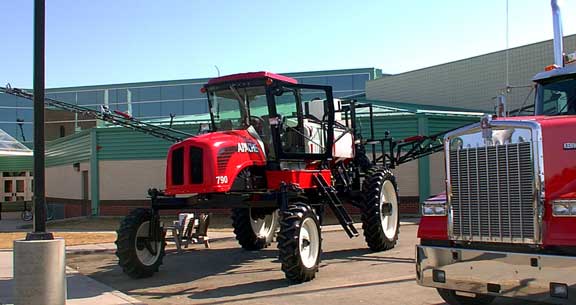|
At the 2001 Rambler Rodeo and Trade Show many companies have displays showing
off the products that they hope to sell to farmers in the area. But, this display
really caught my eye. The pictures at the top and bottom of this page truly tell
of the way agriculture has changed and identify what it is today.
Continuous cropping has meant a lot of changes in farming practices and the most
important of those has been the dependence upon chemicals to allow for zero tillage
and suppression of weeds. This development has come about as farmers have struggled
to find a means to produce the most product off of their land and do so with the
smallest output of operating expenses. This striving for increased productivity
is the most important element in modern agriculture but it has put the farmer into
the dire straights that faces them. Their increased productivity has kept them on
their farms when the economic forces brought about by government policy should have
rendered them unable to continue.
This ungainly chemical application machine is now an every day part of big time farming,
they suppers weeds spring and fall, apply chemicals through the growing season and
in many ways have taken over the role of general farm implement that once was the
job of the tractor. But these are expensive highly specialised machines and in general
most farmers do not buy them but rather pay companies to do this work for them.
Essentially all the talk of corporate farming is not about some problem in the future
it is the present system of farming.
The picture below is even more telling because not only has the method of farming
shifted from tillage to chemical application so has the transportation of the final
product. Grain is no longer moved by farm truck to elevator then to railway, it
is now moved from the farm by massive tractor trailer commercial "B" trains.
This shift has, unlike the movement to chemical farming, which increased productivity
and profitability, has added a huge amount of extra expense to agriculture. Not
only is the grain hauled further to elevators but the elevation costs have risen
disproportionate to the supposed efficiency of large terminals, then the cost of
transportation to market has increased equally so that transportation now costs more
than production of the product.
All in all the story of modern agriculture is in these two machines, chemical application
and trucks. The future of modern agriculture is still not in sight as the low capital
gain from the process is preventing the next and obvious development in the industry
to automated mini machines that will handle the chores of agriculture unattended,
but that's another story.
Timothy W. Shire
|

